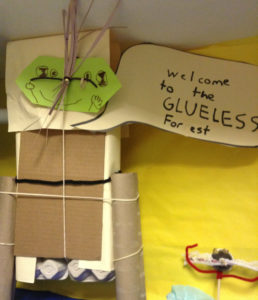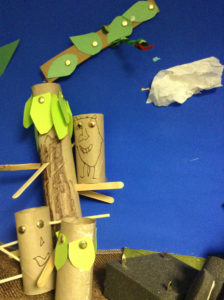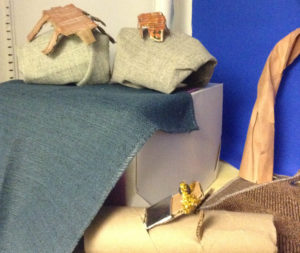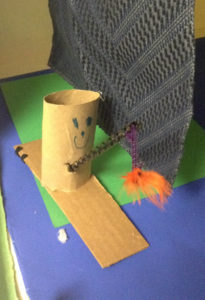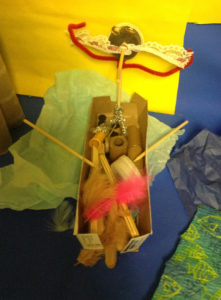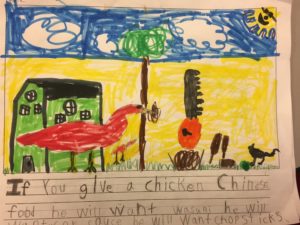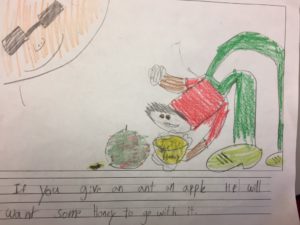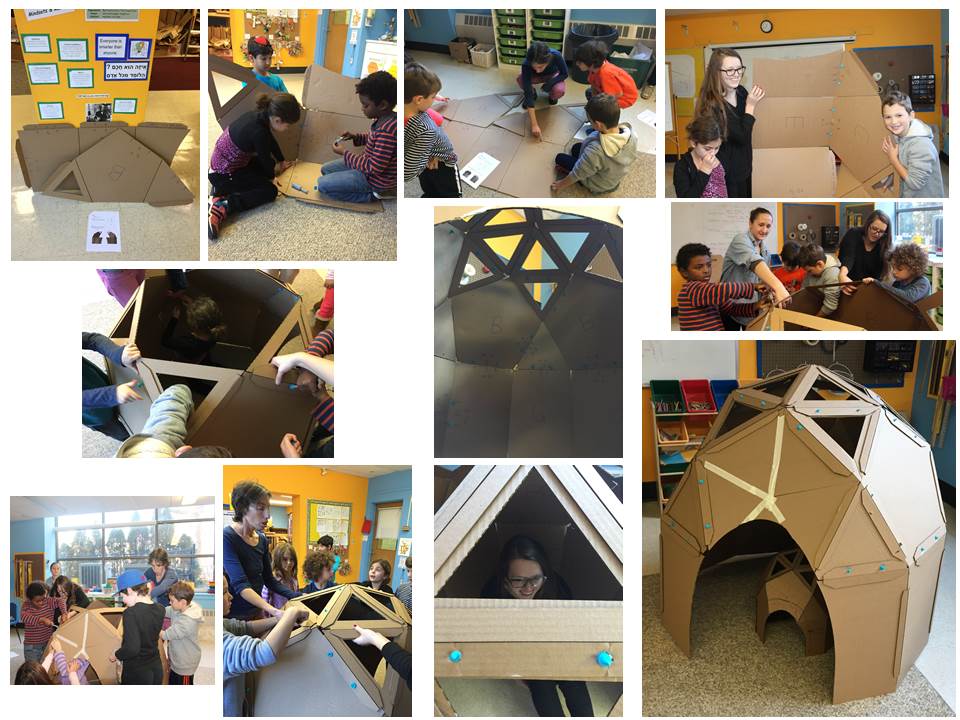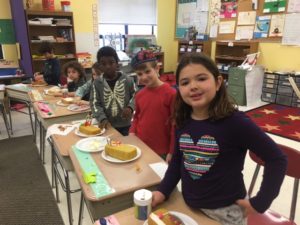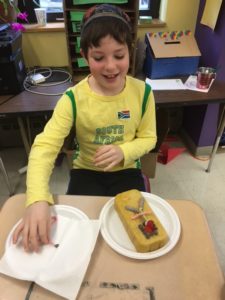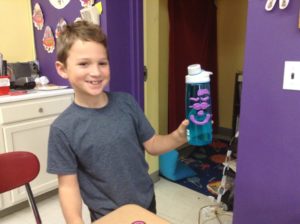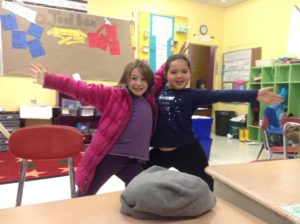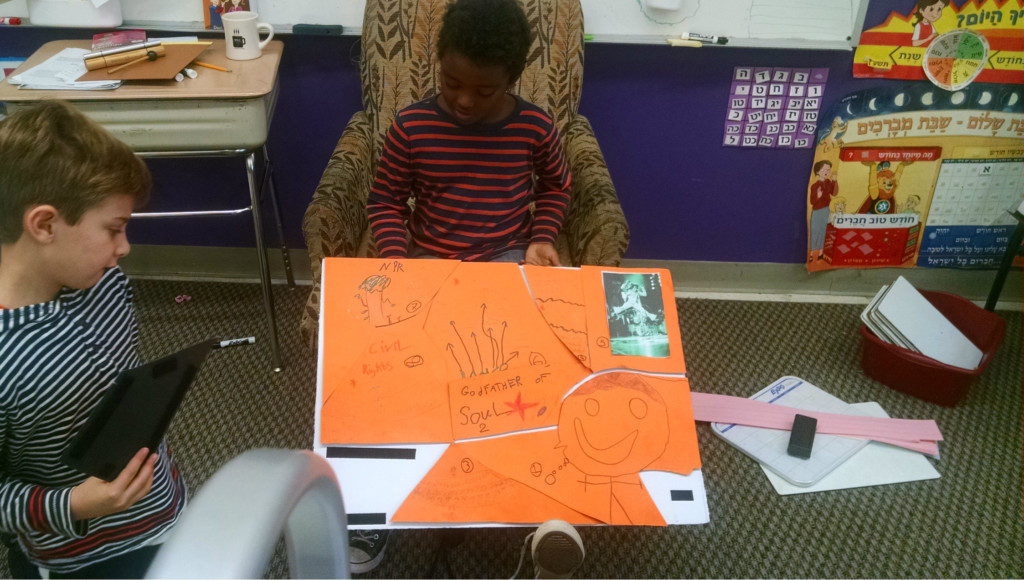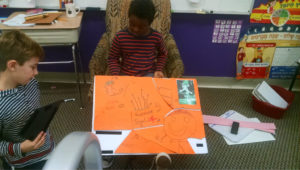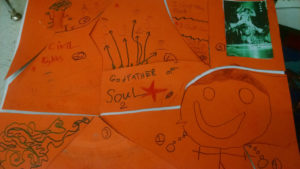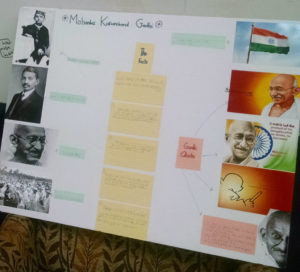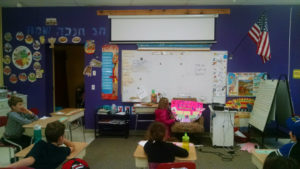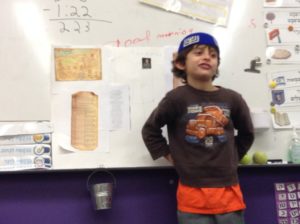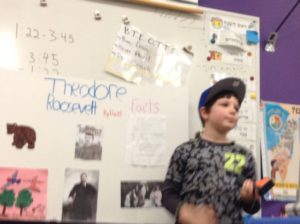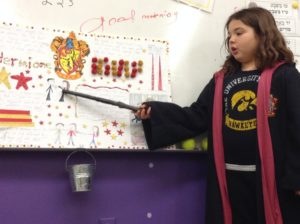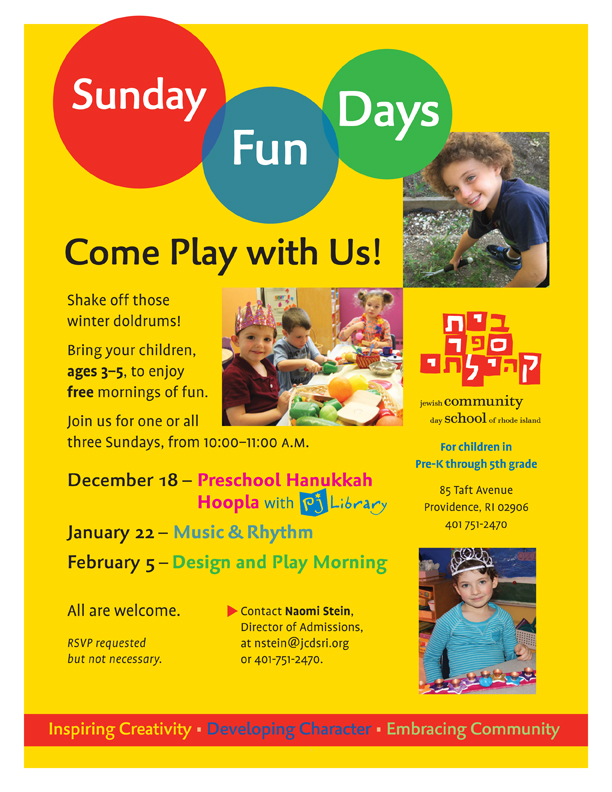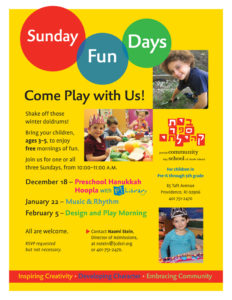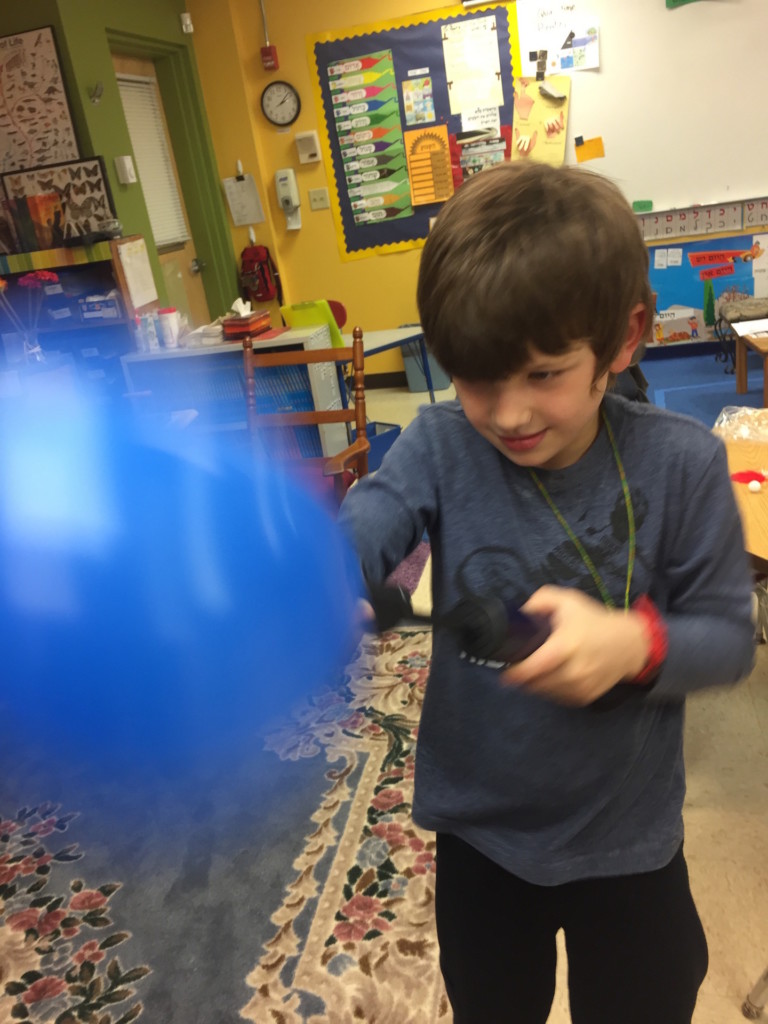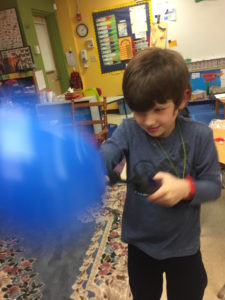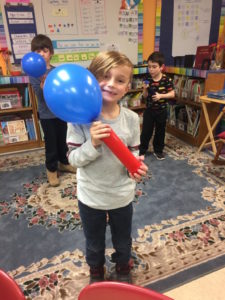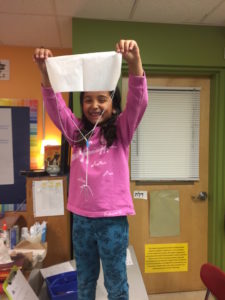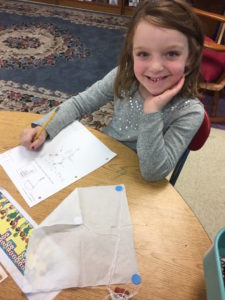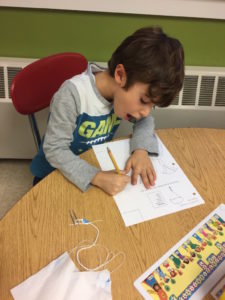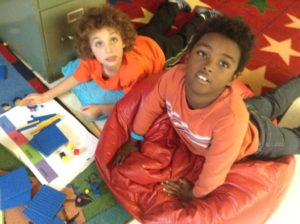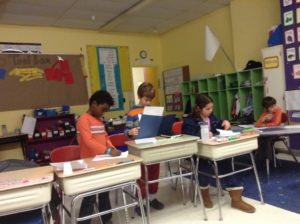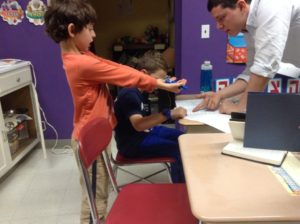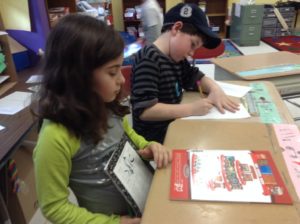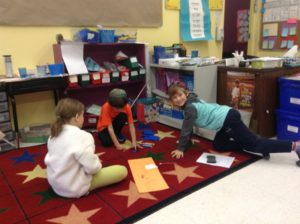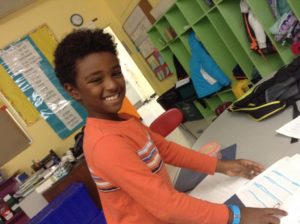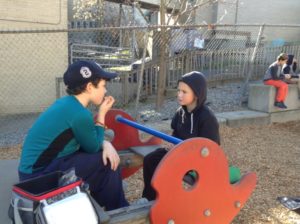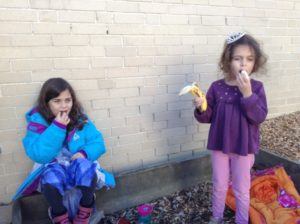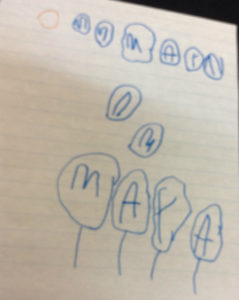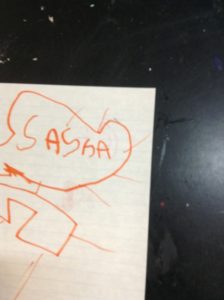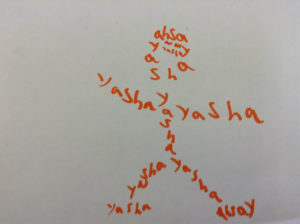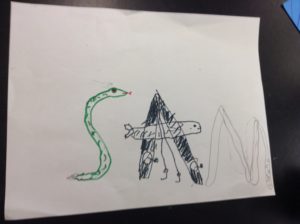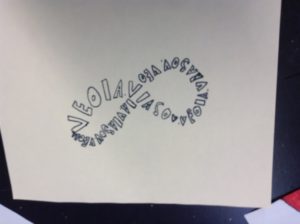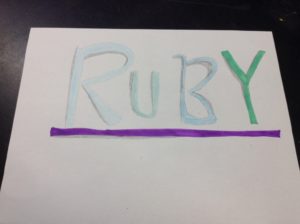Children have completed their 3-d design unit and have created a variety of structures and figures. To earn the privilege of using glue and tape, kids first had to show they could build things using different attachment strategies. Even after glue and tape were given to them, students continued to build small creatures and plants using their newly learned attachment strategies. I decided to put all of their creations together in a display that we call “The Glueless Forest.” The results are impressive and speak for themselves.
 Naomi Stein
Naomi Stein
If . . . then
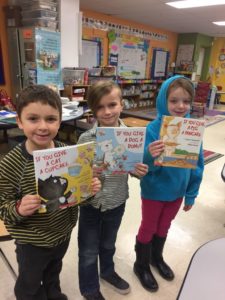
Reading is Thinking. During read alouds, we have enjoyed reading many books that have helped us to focus on cause and effect in a story. Some of our favorite books are If You Give a Dog a Donut and If you Give a Pig a Pancake by Laura Numeroff. We also practiced this skill during our guided reading groups. When you can figure out when the author is telling you about why something happened, or the cause, and what happened, or the effect, then you will better understand what you are reading. In our class, we have become so good at noticing cause and effect in our readings that we wrote our own cause- and-effect stories. Some of our creative stories included: If you Give a Chicken Chinese; If you Give a Dog a Dill Pickle; If you Give a Monkey a Muffin, and If you Give an Ant an Apple. Reading and writing is fun when we wear our thinking caps!
Thirdgradia Design with Brown Engineering Students
This year, the Design Lab has a small corner carved out with bean bags and pillows. It has become affectionately know as the “Recharging Station” and is meant to be used for students to relax for a few short minutes during their busy days to unwind and recharge.
The citizens of Thirdgradia noticed that the Recharging Station was being used during class in a distracting and unhelpful way. Students were getting too comfortable and spending too long there. The third grade class decided to focus on this ‘problem’ and to find a solution for it through the design thinking process. Luckily, two Brown Engineering students, Katie and Sara, were also working on a similar design problem. They were looking to create furniture for children that was designed with children’s input. We invited them to the third grade Design Lab class every Friday to be a part of this process.
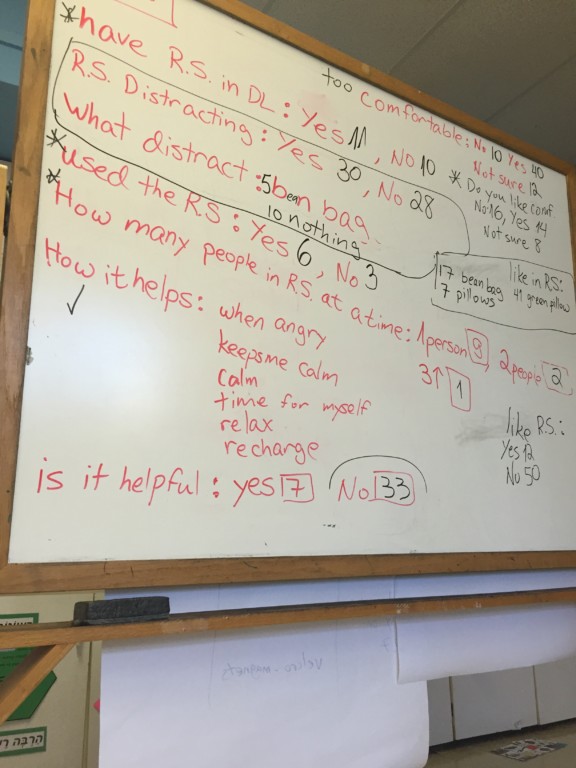 The first step the third graders took was to be empathetic in order to understand the users (tired students). They compiled a list of questions and interviewed students from all grades during their recess and free time for two weeks.
The first step the third graders took was to be empathetic in order to understand the users (tired students). They compiled a list of questions and interviewed students from all grades during their recess and free time for two weeks.
The second step of Design Thinking required that third graders study and understand the data and information they collected and then defined their problem in a ‘How might we…’ statement.
Here is their statement: How might Thirdgradia fix/ change/ redesign the Recharging Station so it will be a small, private, less comfortable, calming and less attractive spot?
The third step of their Design Thinking process was to brainstorm and think of as many wild solutions as they possibly could. This process was facilitated by our friends Sara and Katie, from Brown. Students noticed that the Recharging Station was too open and its boundaries undefined. Students’ ideas included adding a privacy screen, developing a system that shows who is in the station, adding windows, and adding an escape route in the event of a fire. Students also wanted to reduce comfort (remember, one of their problems was that kids were spending too much time in the station!) by rearranging the pillows, building a plain cardboard structure, using a plain color and reminding users about appropriate use of the station.
The fourth step in the process was prototyping, at which time students were able to create and build. They worked with the Brown students to build small models of what they hoped to create. The students had a short initial prototyping experience, where the groups of students were asked to draw or build some aspect of the ideas generated earlier.
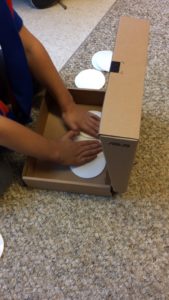
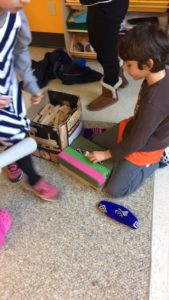
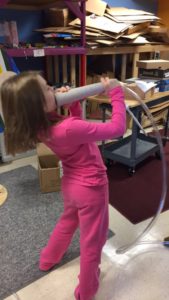
Last week, Sara and Katie brought to class their final prototype that incorporated many of the students’ solutions and perspectives. They call it the Quiet Pod. The class put the pieces together to create the final product in half an hour. The students had lots of fun, and were given ample opportunities for collaborative work and cooperative learning. They also gave the designers thoughtful and useful critique.
We are grateful for our school’s partnership with these talented students and the engineering department at Brown.
Our work is not done yet, but it is incredibly exciting to see our design process coming to life!
To be continued…
Rotem
December in Thirdgradia: Kid Edition
Hello!
This is what we’ve been doing for the past few weeks:
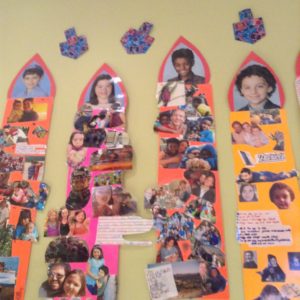
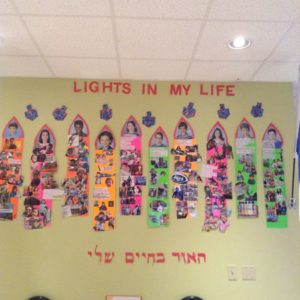
Let’s start with science. We took wires and a battery and a light bulb and tried to make the light light up. We also tried to make a long string of lights and make all of them light up. We unplugged one of the lights but the other ones had to stay on. 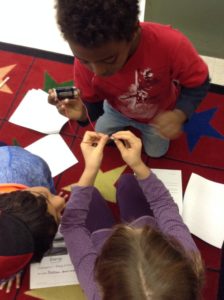
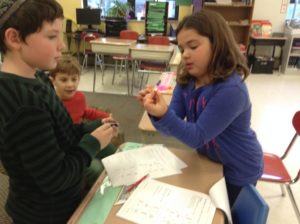
In spelling we are having a lot of tests. We have pre-tests to help us prepare, and then a post test. The theme last week was consonant blends. Also in ELA, we finished our final persuasive essays and now we are starting on a new unit on Fantasy. We are reading Matilda out loud. We have jobs like “empath” who answers the question, “what would you do if you were _____.” We also have an artist, our personal favorite, who has to draw a picture based on the chapter we are reading.
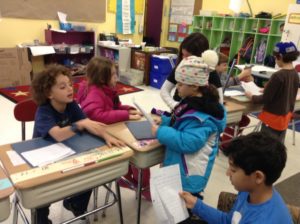
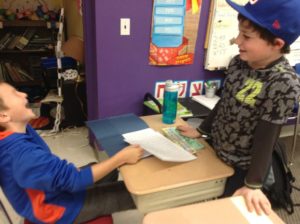
In community time we have been talking about problems and design solutions. Just today Mr. Mirsky told us about a new money system (Cubucks). We can earn them by doing more homework, not calling out, and being more respectful to our peers.
In Judaics we made Parsha cakes based on scenes from the Torah portion with Jacob in it. And we have been learning about Chanukah. We just finished our Lights of my Life project (see photos above). They are hanging up in the Lobby and they look awesome.
Peace out Cub Scouts. See ya next year.
Nontraditional Homework
When I was in elementary school, homework was mostly photocopied dittos. These “skill and drill” worksheets were tedious, boring, and were easily completed on the bus ride to school. In my opinion, the classroom is the place where practicing skills is most beneficial, where the teacher can provide targeted instruction, and the community can provide expert feedback. The home provides a more comfortable, less formal learning environment that allows children to take manageable risks as they follow their interests. Nontraditional homework harnesses the benefits of learning from home, and flips the traditional model of homework that I grew up with.
In Thirdgradia this week we just had our second round of presentations, and each of them was rigorously researched, intentionally crafted, and passionately delivered. For the first round, children were limited to people (fictional or real) and their chosen topics encompassed a broad range of personalities. Although all presentations incorporated a poster board, each student’s personal style was on full display.
I was genuinely moved by the hard work evidenced by these presentations. I look forward to seeing the rest of the community present, and you can look forward to another blog post soon to document their efforts.
Design Vs. Engineering in Schools
Design has become a very popular term in education these days. It seems the term is used in a million ways, just to spice things up. For example, I was recently at a local private school and I noticed a prominent display that said “Design Challenge: Create a catapult that can launch a golf ball at least 5 feet.” Now, this, to me at least, is not a design challenge, but rather an engineering or a physics challenge. Despite the fact that students are asked to design an object, children are not asked to identify real life problems, observe human behavior, or empathize with the user- all the core values of Design Thinking.
In the JCDSRI design lab, we have been working hard to teaching the invaluable design thinking process BEFORE attempting to build a machine. Let me give you some examples: In first grade, they noticed that one student frequently forget his diabetes bag whenever changes his class, so they are working on creating systems to help him remember. In fifth grade, students noticed that we create a tremendous amount of waste during lunch and so they will be trying to devise ways to get families to use less disposable material and use more glass, metal, or reusable plastic packaging.
Design thinking, often referred to as “user centered design” or “human centered design” starts with looking for problems in the world, and moves on to interviewing and observing how people act, so that we understand people’s values. Many of our design lab classes are actually about how to ask questions, observe and gather data- and not at all about building or engineering!
This is time well spent. One thing that is exceeding difficult for children (and perhaps all people) is to NOT come up with solutions right away. One of the design thinking mantras is “You’ve got to move slow to move fast!” In other words- it is critical to really observe, empathize, and define a problem before thinking of an answer. Sometimes this process feels frustratingly slow (especially for children), it is better than designing a solution to a problem that doesn’t exist.
Our fifth graders are eager to ‘invent’ products and systems to help families create less waste. As Design Lab teachers, our job is to slow them down and get them to observe and empathize before they invent. The fifth grade is now sitting dispersed throughout the lunch room, observing and taking note of what kids bring to school in their lunch bags, what gets eaten, and what gets thrown away. Their next step will be to interview parents about the process of making lunch, and why buying prepackaged, disposable bags is so attractive. After they understand the practices, values, and marketplace around disposable materials, they will begin to design solutions to the problem.
The skills of engineering and design are complementary but very different. Where engineering is solving a pre-defined problem design is finding and understanding a problem. Both are important, but where as engineering is geared towards “making stuff,” design is geared towards making the world a better place for human beings.
Join us for Preschool Design and Play!
Preschool Morning of Design and Play
Sunday, February 5
10:00am – 11:00am
Feeling creative? Love to build? We’re inviting preschoolers into our Design Lab and Pre-K classroom for a morning of designing, building and fun! Our beloved kindergarten teacher, Alison Morrow, will help us create and play! Program is for 3 to 5 year olds and is free of charge.
RSVP requested but not necessary.
Air is all around us
Hands-on in the classroom, our first-grade scientists had fun experiencing the air that surrounds us.
The students used syringes, tubing, vials and more to show that air is indeed matter. It is a gas, and it is invisible! Still, air, we all learned, does take up space. It can be both compressed and expressed!
For example, we conducted experiments that showed that when air is compressed its pressure builds and that pressure can push other objects around.
In another observation, we dropped  parachutes to examine how the paper increased air resistance, slowing down the effects of gravity.
parachutes to examine how the paper increased air resistance, slowing down the effects of gravity.
We blew up balloons and puffed on feathers in our classroom. Air definitely shaped and pushed those objects.
Our young researchers recorded their observations and their data in science notebooks. Another week of active engagement in the first grade!
Late November in Thirdgradia
We’re back! Welcome to the blog.
Our first subject is math. This week we have been working hard. We started a new unit on addition with regrouping. We got to use this thing called the PVC, place value chart. It’s really good because we get to do our own method, aka regrouping. The PVC was handmade by Thirdgradia, we use unit cubes and do the problems in our hard cover math books.
We have been doing a lot of writing. We have been writing persuasive essays. These bloggers essays are about the Spice Girls and Michael Jackson. We made up a new name for writing: the writing factory. Push a button to start it up, but don’t hit self destruct or Mr. Mirsky will put it back to old school writing.
In Hebrew we have been doing a really fun test where we copy the sentences in Hebrew and draw pictures — oh that reminds us! Thirdgradian parents, we are WARNING you: you are going to have pictures overflowing your house because your kids will do Lights of Your Life posters for Hanukkah.
Thirdgradia is looking forward to a lot of things in the coming weeks. We will have some buddy time on Monday with a Thanksgiving snack feast. We can’t wait for you to see these pictures, all the ones on the blog were taken by us. Another thing we are really excited for is we are getting Pen Pals from Los Angeles.
In community time, we talked about the transition song. We talked about how to use it properly, and if we should get a longer one. Our citizens thought it would be a good idea to make up our OWN transition song.
Since we are learning about persuasive essays, let’s write a conclusion now. Thirdgradia is the best third grade in the history of third grade. Au revoir, adios, shalom, good bye. Until next time. 🙂
The Day of Ahmed’s Secret
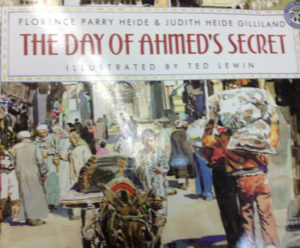
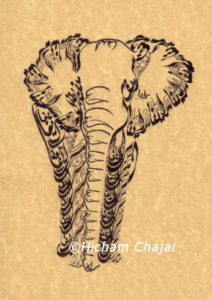 Last week we read one of my favorite picture books, The Day Of Ahmed’s Secret by Florence Parry Heide and Judith Heide Gilliland. From pre-K to fourth grade, we were inspired by the intricate watercolor and timeless story. After the book I showed the kids some arabic calligraphy. They were especially fond of the elephant. The kids drew their names as proudly as Ahmed does at the end of the book. Here’s some of their work:
Last week we read one of my favorite picture books, The Day Of Ahmed’s Secret by Florence Parry Heide and Judith Heide Gilliland. From pre-K to fourth grade, we were inspired by the intricate watercolor and timeless story. After the book I showed the kids some arabic calligraphy. They were especially fond of the elephant. The kids drew their names as proudly as Ahmed does at the end of the book. Here’s some of their work:

